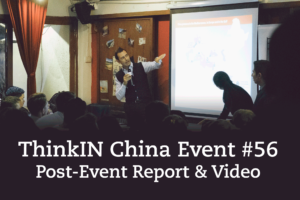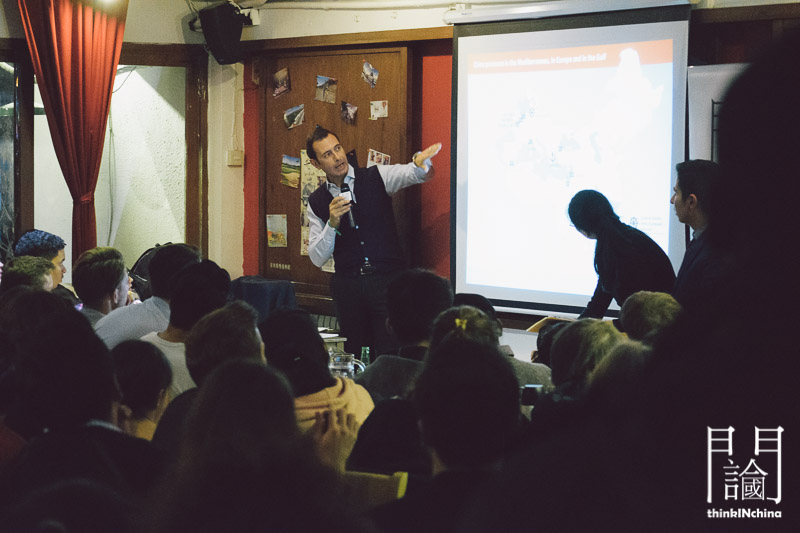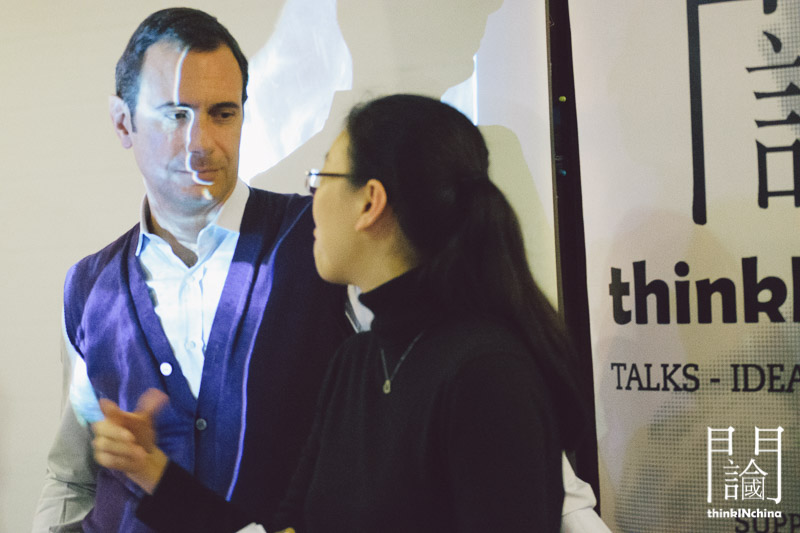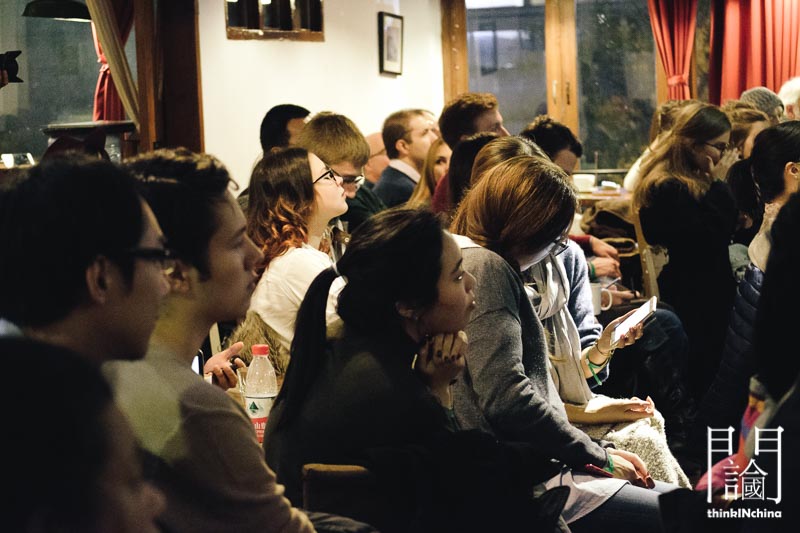

#56 Event Report – China’s Maritime Road & the New Centrality of the Mediterranean
Speakers
Massimo Deandreis General Manager of SRM – Economic Research Center Intesa Sanpaolo Group
Wang Lin 王琳 Fellow at CBN research Institute, a think tank on foreign affairs, international finance and global energy.
Post-Event Video
(If this section is blank, make sure you’ve turned on your VPN)
Report
Only three weeks after event #55, thinkINchina (TIC) gathered again for what promised to be another thought-provoking evening. With both the Yenching and Schwarzman scholars out of town, TIC was especially honored to still host over a hundred young scholars at Wudaokou’s Bridge Café. And worth attending the evening was. The two speakers explored the central role of Mare Nostrum in China’s massive One Belt, One Road project in great detail – yet without losing grasp of the bigger picture. All the way from Italy came Massimo Deandreis to shed light on developments in the global maritime economy, which had presented both the Mediterranean and China with many new opportunities. From closer to TIC’s home came Wang Lin, who provided us with a better understanding of what One Belt, One Road actually is, and specific cases of port building in Pakistan.

Massimo Deandreis started us off by stressing the intensification of Middle Eastern, North African, and European commercial relations with China of the last couple of decades.
Trade between China and Europe is booming – increasing from 79 billion euros in 2001 to 473 billion last year
Simultaneously, Chinese trade with the MENA region grew more than tenfold, as China decisively overtook the US as MENA’s number one trading partner in 2012. Together, Europe and the MENA region were good for a staggering 625 billion euros of Chinese trade in 2015 amounting to 6.2 percent of China’s total GDP.

Now why is this relevant for the Mediterranean? Because globally 80 percent of trade is carried by sea and handled by ports bordering said sea. The megaships carrying the gigantic amount of Chinese goods to Europe and MENA do so almost exclusively through the Suez Canal leading them right into Mare Nostrum. Moreover, Mediterranean ports are gaining ground vis-à-vis their Northern European counterparts, as they have successfully increased their market share from 27 percent (in 2008) to 34 percent (in 2015). This allows the region to enjoy an even bigger piece of a cake that grows larger every year.
According to Deandreis, there are four major phenomena currently influencing the global maritime economy. The New Suez Canal has effectively doubled the capacity of its previous version. The canal nowadays allows 97 ships to pass through each day whereas only 47 could in the past.
The building of even larger megaships has also transformed maritime trade.
Whereas ships were maximally able to carry 4.500 containers (TUEs) back in the 1970s, the newest megaship will be able to carry over 22.000TUEs. Interestingly enough, the New Panama Canal, inaugurated in 2016, can only entertain ships carrying up to 13.200TUEs whereas the newest megaships are indeed able to pass through the New Suez Canal. Although the New Panama Canal constitutes a significant improvement of the former version, the Suez route has relatively gained ground. Moreover, China has intended to cash in on Suez’s new possibilities by having its shipping company Cosco Shipping forming a block with French, Taiwanese and Hong Kong competitors under the name the Ocean Alliance. Today this alliance is responsible for 35 percent of all Asian-European and 40 percent of Trans-Pacific maritime trade.

Deandreis therefore concluded that China is a key player in all four phenomena currently reshaping the maritime economy, and on top of that has a growing geo-economic role in the Mediterranean coherent with China’s One Belt, One Road project. Furthermore Deandreis reminded the attendees that it is indeed reasonable to think that shipping companies will exploit sea-routes that assure multiple stops to unload containers and load others, and that companies intend to use the largest, and most cost-efficient vessels to ship goods. The Suez route is the only route with such stops and the new Suez Canal is the only canal that these huge vessels can pass through. It is for these reasons that the Mare Nostrum region is perfectly positioned to reap many of the fruits the One Belt, One Road project will bring to Europe.
Then Wang Lin, a researcher and journalist who had joined Xi Jinping on the Pakistan trip during which he announced the 46 billion dollar investment package in the country, took the floor. She stressed the sheer magnitude of the One Belt, One Road initiative pointing out that,
ports spreading from Pakistan, to Sri Lanka, to Southeast Asia, and all the way up to Israel and Egypt have been constructed with Chinese engagement.
Whereas Chinese companies like China Harbor, China Shipping Company and China Operations Company initially used to just function as contractors, they nowadays actively invest in foreign ports. Indeed, they intend to become joint operators or even owners of these harbors. They do so however, by offering a wide range of different partnerships that will ensure that the sovereignty of the host state is respected. Lin stressed that China’s state owned enterprises do not go out as part of big brother’s (Beijing’s) geopolitical strategy, but instead are mostly driven by their own commercial interests. Fears of future meddling in internal affairs by Beijing through these ports, Lin argued, are therefore unfounded.

Lin proceeded by further stressing the altruistic character of the One Belt, One Road initiative. She supported her argument by pointing out China’s flagship project the 46 billion dollar China Pakistan Economic Corridor. Through Chinese financial support the otherwise dead-in-the-water Gwadar port project was rendered economically feasible. Today it only takes trucks 15 days to drive from Xinjiang to this harbor. Pakistan can because of this project now be included in the Maritime road. Through its state owned companies extending more and more credit, China is expected to enable an increasing amount of projects to come off the ground. Hereby connecting more and more countries to its One Belt, One Road initiative in the near future.
Joris Jaap Teer